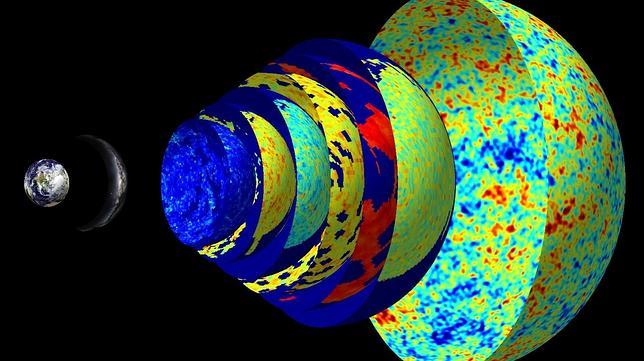You Are Here: How Astronomical Surveys Are Pinpointing Our Place in the Cosmos
Upcoming telescope projects on Earth and in space will map out billions of stars and galaxies all around us
 ZOOMING IN: A still from a simulated fly-through of galaxies mapped by the Sloan Digital Sky Survey.
Image: Miguel A. Aragón (Johns Hopkins
University), Mark SubbaRao (Adler Planetarium), Alex Szalay (Johns
Hopkins University), Yushu Yao (Lawrence Berkeley National Laboratory,
NERSC), and the SDSS-III Collaboration
ZOOMING IN: A still from a simulated fly-through of galaxies mapped by the Sloan Digital Sky Survey.
Image: Miguel A. Aragón (Johns Hopkins
University), Mark SubbaRao (Adler Planetarium), Alex Szalay (Johns
Hopkins University), Yushu Yao (Lawrence Berkeley National Laboratory,
NERSC), and the SDSS-III Collaboration
-

The Best Science Writing Online 2012
Showcasing more than fifty of the most provocative, original, and significant online essays from 2011, The Best Science Writing Online 2012 will change the way...
Read More »
Those celestial maps are about to see some major revisions. New and upcoming campaigns using ground-based telescopes or spacecraft promise to fill in many new details in astronomers’ maps of the sky. Together these projects will catalogue detailed positional information on several billion stars and galaxies near and far.
One of the most dramatic upgrades to celestial cartography should come from the European Space Agency’s Gaia spacecraft, which is scheduled to launch next year. After taking up a position in deep space, well beyond the orbit of the moon, Gaia will map the positions and distances of roughly one billion stars. The mission is the successor to the Hipparcos satellite, which launched in 1989 and whose catalogue still finds wide use. But that satellite charted just 120,000 stars or so, and only a slight minority were pinpointed with top-level precision.
Hipparcos measured precise stellar distances, to within 1 percent, for fewer than 1,000 stars. Most of the satellite’s distance measurements have much greater uncertainties of 20 percent or more. Gaia should measure the distances to about 10 million stars with a precision of 1 percent or better. “That’s about the quantum leap that we will make,” says Timo Prusti, project scientist for Gaia at the European Space Agency (ESA).
By mapping out so many stars, astronomers hope to improve their understanding of our home galaxy’s layout. “The main science goal is to address the issues of our Milky Way—the structure and the dynamics,” Prusti says. Buried as we are within the Milky Way, humankind has never had a glimpse of the galaxy in its entirety. The astronomer’s predicament is a bit like that of an artist who must sketch the Manhattan skyline from midtown, instead of from a clear vantage point across the Hudson River. Just as the artist can inspect Manhattan’s skyscrapers one by one to reconstruct the skyline in her sketch, the astronomer can fill in a map of the galaxy one star at a time.
A next-generation space telescope called Euclid ought to extend that map from the local to the global, by mapping up to two billion galaxies in three dimensions. The mission, which ESA approved in June for a 2020 launch, will scan roughly one third of the sky to measure the positions and distances of galaxies across the universe. The hope is that the distribution of cosmic structure will reveal some hidden clue to the nature of dark energy, the unknown entity driving the accelerating expansion of the universe.
“We have no idea what dark energy is, but it’s a very subtle effect,” says Richard Griffiths, the Euclid program scientist at NASA, which is a participant in the European-led mission. “The only way we can get at it is to study the whole universe, basically.”
Euclid’s design specs should allow astronomers to see galaxies so distant that their light has taken more than half the age of the universe to reach Earth. “We will literally obtain a three-dimensional image of our universe, with us in the very center, and we will be able to detect the accelerated expansion in it,” says ESA’s project scientist René Laureijs. “It will give us the opportunity to watch the universe evolving over the last 10 billion years.”
Euclid is not the only project charting galaxies to try to unravel the mystery of dark energy. A campaign called the Dark Energy Survey will soon take advantage of a new 570-megapixel camera on a four-meter telescope at the Cerro Tololo Inter-American Observatory in Chile. The survey will measure the shapes and positions of some 200 million galaxies across a quarter of the southern sky. Whereas the scope of the ground-based project pales in comparison to the billions of galaxies targeted by Euclid, the Dark Energy Survey should have a significant head start on its space-based counterpart. The project’s camera has just been installed on the telescope and could see first light as soon as this month, according to the project’s Facebook page.
Fuente
Scientific American Physics news@email.scientificamerican.com




 Share
Share Email
Email Print
Print












